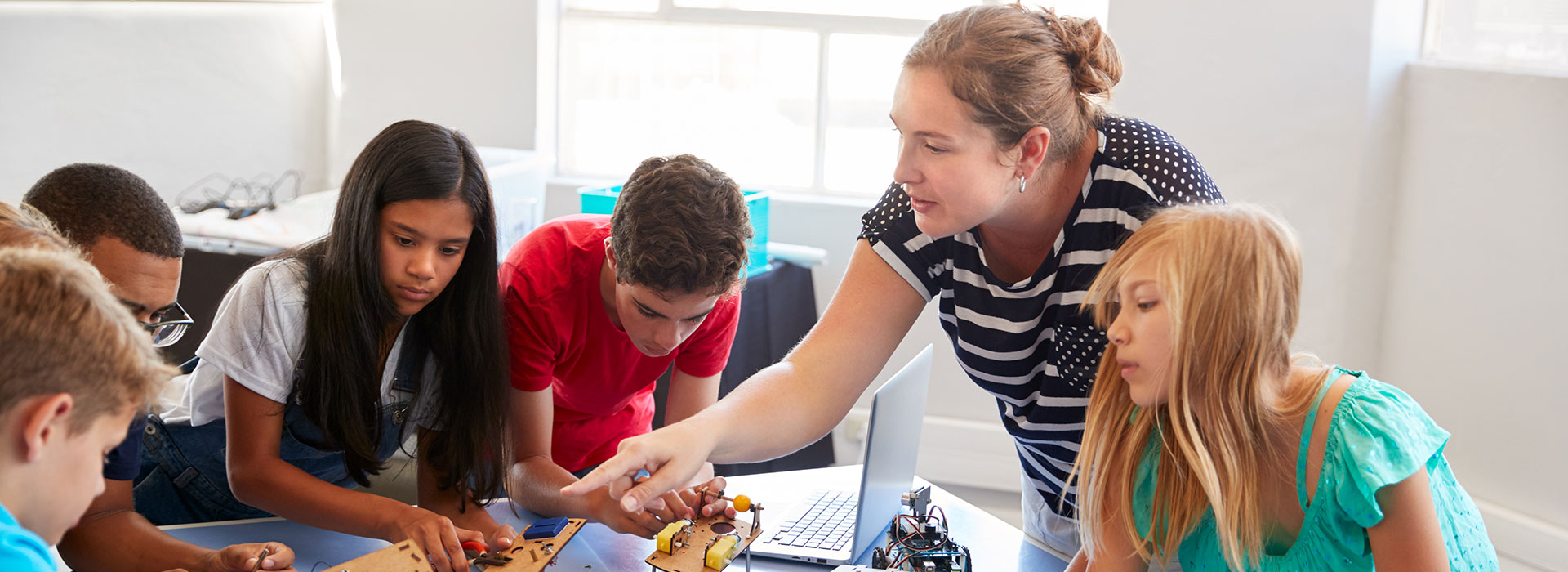How to Teach Students to Follow the Other Brick Roads
When we were growing up, when it came to math class, most of us could probably relate to the characters in The Wizard of Oz. We had to “follow the yellow brick road” of procedures, tricks, and rules from our teacher, to reach “The Emerald City” correct answer. No matter the confusion and fear and obstacles along the way, we had to stick to what we were taught.
What if our students could choose a different brick road that was more fun and interesting?
What if they chose their road and arrived at different, equally valid destinations? What if we allowed them to use their knowledge and experiences, and those of their peers, so they could make sense of the twists and turns on their roads, and solve the problems they encountered? Math talks are one tool that educators can use to create more enjoyable, equitable math experiences for all of our students and help them to be better problem solvers and deeper thinkers along the way.

Math Talk Examples: Different Roads to Different Destinations
Some math talks are designed to have a variety of different answers and encourage students to “construct viable arguments and critique the reasoning of others”, which is Standard for Mathematical Practice 3. One of my favorite math talk exercises is Which One Doesn’t Belong, inspired by Christopher Danielson.
In this math talk exercise, students look at four different pictures, numbers, or graphs and make an argument for one that doesn’t fit in with the other three. While looking at four different cakes or sports team logos may not be directly tied to your curricular goal for the day, the conversation and thinking it generates can transfer to whatever else you are working on. Liljedahl (2021) found that when students engage in thinking tasks, even tasks not connected to their curriculum or standards, “once the thinking starts, it becomes an end unto itself, and students are not only more willing to think but they want to think” (p. 29).
When students see that there is more than one answer and that their thinking is valued, this can prime them to think more deeply about other areas of mathematics and opens up new possibilities. It also creates a safe space to take risks and share their ideas.
Another favorite math talk exercise is Would You Rather Math, which asks students to choose between two different prompts or scenarios and justify their thinking. One example asks, “Would you rather have 8 quarters or 2 one-dollar bills?” A 3rd-5th grade example wonders, “Would you rather receive a gift of $1.50 for every month of your life or a nickel for every day of your life?” As students argue from evidence based on their mathematical thinking, they are not only using Standard for Mathematical Practice 3 but also Standard 6, “attend to precision” in their communication as they defend their choice to their peers.
Math Talk Examples: Different Roads to the Same Destination
Some math talks are useful for helping students get to the same answer but from many different possible roads. When students start to see a variety of possible solutions or options, they start to realize that math can make sense to them and that their skills and experiences can help them understand.
One of the most engaging math talks I’ve found is Slow Reveal Graphs, created by Jenna Laib. Parts of the graph are revealed one slide at a time, allowing students to predict what the topic, the axes, the scale, and the results of the graph might be. This is an excellent way for students to grapple with estimation and data that can transfer to other subject areas such as social studies and current events. While there is a final answer in the actual graph, the uncertainty and small bit of information revealed prompts more student thinking and discussion about mathematics along the way.
A similar idea is Esti-Mysteries from Steve Wyborney. Students are shown a picture of several items and asked to estimate how many there are in the container. Clues are revealed one at a time to help them narrow down their estimates, providing opportunities for revising and justifying thinking as new information is introduced. This is an easy way to promote that making mistakes and revising your thinking are critical skills in science and media literacy as well!
There’s No Place Like Home
ALL students come to us with vastly different experiences and knowledge. It is important to provide opportunities for all of them to feel safe using what they know to make sense of mathematics is an important tool in our math toolkit. Too often, teachers see students as empty vessels needing to be filled, like the Scarecrow without a brain, or the Tin Man without a heart. Too often, our students come to believe this of themselves. When student thinking is honored, valued, and sought out by their teacher and peers, students can see that they have the ability inside them to understand and work through problems to reach their destination, whichever road they choose, or even create, to get there. They’ve had that power all along, and math talks are the way to show it!
Liljedahl, P., Zager, T., & Wheeler, L. (2021). Building Thinking Classrooms in mathematics, grades K-12: 14 teaching practices for enhancing learning. Corwin Mathematics.
Learn More about The Core Collaborative Learner-Centered Mathematics and how to transform your classrooms!
A learner centered mathematics classroom amplifies student voice and leverages the power of inquiry through problem solving. Shifting to an inquiry approach represents a significance change for teachers nationally and the formative assessment process creates conditions for student ownership and agency.
Learn More!
